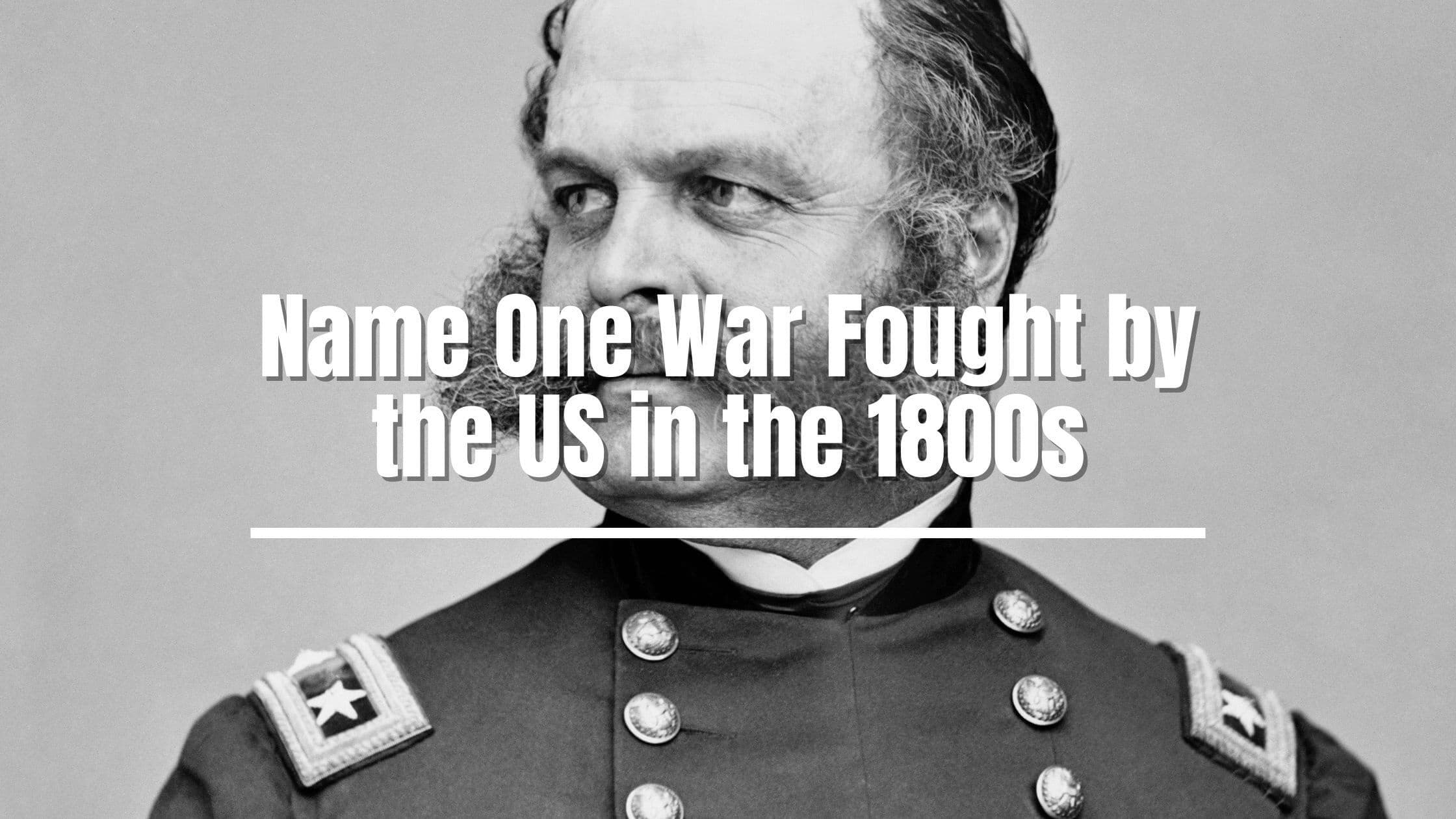Table of Contents
ToggleTo pass the US citizenship test, you will have to answer 10 of a possible 100 questions. The following question is from the USCIS test.
Name one war fought by the US in the 1800s.
Acceptable Answers:
- War of 1812
- Mexican-American War
- Civil War
- Spanish-American War
Below is an explanation of the answer to the question.
The American Civil War
The American Civil War was a military conflict fought between the Confederacy, eleven southern states that had seceded from the United States, and the remaining twenty-two northern states. The war arose primarily over the institution of slavery, which had dominated much of the South’s culture, increasingly alienating them from the rest of the country.
Although tensions in the United States over slavery had been rising for decades, the election of Abraham Lincoln in 1860 finally convinced the southern states that the only way to protect slavery was to secede from the Union.
1861 – Fort Sumter
In the early months of 1861, although many southern states had already seceded, major military hostilities still hadn’t commenced, giving some hope the situation could be resolved without war. Complicating the political environment was the state of affairs at Fort Sumter, a federal military base located on an island off the coast of South Carolina, which had recently seceded. The fort was running low on provisions and needed to be resupplied or would have to surrender.
President Lincoln, who did not want to be viewed as the aggressor in the inevitable military showdown with the Confederacy, informed the governor of South Carolina that he would attempt to resupply the fort with non-military provisions. President Jefferson Davis of the Confederacy was faced with the dilemma of either allowing the fort’s resupply and continued operation or having to initiate hostilities. The Confederacy chose the latter option and ordered an attack on the island, which quickly surrendered.
The Battle of Fort Sumter was a relatively minor military engagement, resulting in no deaths during the battle itself, but the seminal moment started the Civil War. The states of Virginia, North Carolina, Tennessee, and Arkansas subsequently joined the Confederate states, providing much-needed manpower and industry to their cause.
Albeit a tactical loss, the Battle of Fort Sumter was a strategic victory for the North. It helped unify northern sentiment against the Confederacy, who had been the aggressor in the engagement.
1861 – First Battle of Bull Run
The first major battle of the Civil War occurred near the strategic railway junction at Manassas, Virginia, along the Bull Run River. The Union army under General Irvin McDowell attempted to outflank the Confederate army under Generals Joseph Johnston and P. G. T. Beauregard and achieved early success.
However, additional Confederate reinforcements to the battlefield and confusion resulting in the loss of a vital Union battery eventually turned the tide of the battle.
A final Confederate assault on the Union lines, which had begun to waver as the battle progressed, finally achieved complete success, resulting in a rout of the Union army. The Confederate army may have been too disorganized to pursue the fleeing Union army but had still achieved a major strategic victory.
The First Battle of Bull Run eliminated the popular notion of the day that the war would be a quick and relatively bloodless affair, as both sides settled in for a prolonged struggle.
1862 – Confederate Success in the East, Union Success in the West
The Confederate army was able to achieve many victories against the Union army during most of 1862. Despite suffering higher casualties during the Seven Days Battles, the Confederate army was able to force the Union army under General George McClellan to break off its push toward Richmond.
In this theater, Robert E. Lee, general of the Confederate army, was also able to spearhead significant victories at the Second Battle of Bull Run and the Battle of Fredericksburg, resulting in considerable Union casualties.
The one major Union victory in the East during 1862 occurred at the Battle of Antietam, where the Union army beat back the Confederate forces, who had invaded the North. The Battle of Antietam was the first of two attempts by General Robert E. Lee to take the fight into northern states and gain recognition of the Confederacy by foreign governments, including Great Britain. It was the single bloodiest day in American history, with nearly 23,000 casualties between the two armies.

Get Smarter on US News, History, and the Constitution
Join the thousands of fellow patriots who rely on our 5-minute newsletter to stay informed on the key events and trends that shaped our nation's past and continue to shape its present.
The Union army had much more success in 1862 in the West, capturing several Confederate river forts, including Fort Henry, Fort Donelson, and Island number 10. They were also able to win a major victory under General Ulysses S. Grant at the Battle of Shiloh, the bloodiest single battle of the war up to that point. By the end of 1862, the only significant Confederate stronghold along the Mississippi River was located at Vicksburg.
1863 – Chancellorsville, Gettysburg, and Vicksburg
The Confederate army scored another major victory at the Battle of Chancellorsville, where an impressive flanking maneuver had nearly destroyed a large portion of the Union army.
However, confusion among their ranks during the attack and the loss of General Stonewall Jackson due to friendly fire slowed the Confederate advance and saved the Union army. This victory convinced General Robert E. Lee to attempt to invade the North again, seeking in part to relieve war-torn Virginia from the constant warfare ravaging its countryside.
Soon after advancing into Pennsylvania as a part of Lee’s second attempt at invading the North, the Confederate army engaged the Union army at Gettysburg. The Union army scored a significant victory over the Confederates in the largest battle in North America, who would never again have the manpower or strength to invade the North.
One day after the Battle of Gettysburg, General Ulysses S. Grant captured Vicksburg, giving the Union complete control of the Mississippi River.
1864 – Wilderness, Spotsylvania, and the Election of 1864
Although the Confederacy was quickly weakening, they were still able to effectively resist in the East, forcing back the Union forces under the leadership of General Ulysses S. Grant at the Battle of the Wilderness and the Battle of Spotsylvania Courthouse.
General Grant, however, recently promoted from the western theater, continued to aggressively attack and weaken the Confederate forces, who were unable to replace lost manpower and resources.
The Election of 1864 resulted in a landslide electoral victory for President Abraham Lincoln, signaling the continued resolve of northern opinion toward continuing and winning the war.
1865 – Petersburg and Confederate Surrender
The ever-weakening Confederate army entrenched itself around the city of Petersburg, effectively holding off repeated attacks by the Union army. Although, dwindling resources exacerbated by General William Sherman’s famous raiding campaigns in Georgia and South Carolina from late 1864 into early 1865 and decreasing manpower finally doomed the Confederate war effort.
General Robert E. Lee surrendered to General Ulysses S. Grant at Appomattox Court House on April 9, 1865, effectively ending the Civil War.











